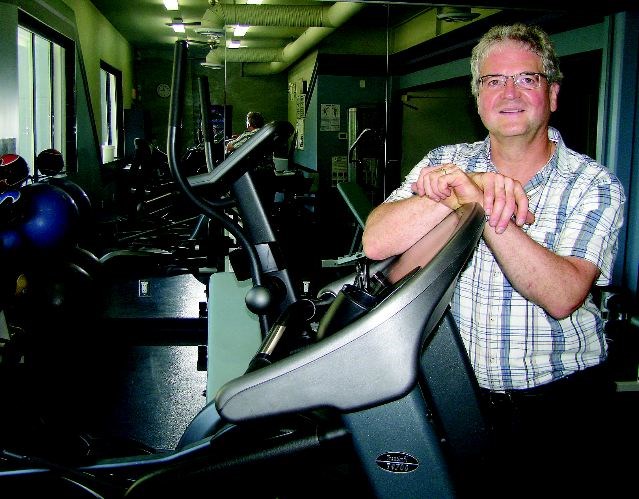Finding workers and keeping them is one of Prince George's civic priorities. With record-setting job numbers, and a low unemployment rate, Initiatives Prince George (IPG) is set to announce today a set of new, locally designed tools for this region's ultra-competitive labour market.
"IPG is launching new recruitment and retention resources that focus on [local best qualities] in order to differentiate Prince George from competing locations when working to attract new population," said Heather Oland, CEO of the city's economic development agency. "The resources will be available for use by employers, public and private agencies, and residents to support attraction efforts."
Local business leaders have been calling for help for more than a year. One of the city's homegrown success stories, 3Phase Power, has had their workforce more than double in the past eight years, and multiply by 10 since they launched in the early 1990s. They are specialists in complex electrical control systems used by mills, mines and oil/gas companies.
"On the recruitment side, Prince George is a challenge because of the lack of training programs here. The College of New Caledonia doesn't really have a program for automation technology so our catchment areas are more Kamloops and BCIT," said 3Phase Power's president Kam Ghuman.
"The retention part is a different topic," he said. "We do a lot of work in Alberta, we see what goes on there. We find we have a loyal group of employees in Prince George but in Alberta it is very unstable overall - people moving around a lot from place to place and company to company. We find in Prince George that is an advantage we have. We need to give a big shout out to our community at large, and the employees we have in this city. The outer image of Prince George is that lumberjack image, but we have a far more sophisticated population than that and that's coming from a guy who grew up in Vancouver and moved here eight years ago."
Bill Kordyban has been in the Prince George lumber business all his life, inheriting the management of Carrier Lumber from his mother and father, Mary and the late Bill Kordyban Snr. He agreed that employee loyalty was a hallmark of this community, many at Carrier enjoying decades of service, but companies had to earn that loyalty.
"Pay can only go so far. You have to have other things to attract people, keep people. Quality of life and quality of work are important as well," he said, standing inside the fully equipped gym and squash/racket ball court at Carrier's head office. He also listed the company get-togethers, the free coffee and other refreshments, corporate culture of safety for the workers, even the aesthetically pleasing (but not opulent) office environment as other measures of respect from management to employee.
"We also expect a lot of our employees, too," he added. "I think they can be justifiably proud of working for us because the work is hard and I hope they feel well-treated for giving us that hard work."
Like Ghuman, it is getting the employees through the front door that presents the biggest challenge for Carrier. Their fabrication and repair shop has a number of openings and site manager Aaron Parent is eager to hear from aspiring tradespeople.
"We do have a good apprenticeship program, we like to have three or so at all times, but there are no fabricators out there right now," Parent said. "We are competitive, really competitive, with wages. It is not a problem with retention, we average about 16 years for our employee duration, it's finding them."
"We have to get away from trades being the last choice of young people," said local MLA Pat Bell, Minister of Jobs, Tourism and Innovation. "We have to shift that notion that parents want to channel their kids away from those careers. We are going to see big shifts in trades training, if we have our way. We know we have to be more responsive to industry. And it is a northern company - the BID Group Companies - that has done a lot of the on-the-ground work to help us plan that out."
It's not the first time Prince George has faced this dilemma. Lamont Stevens, son of the late Allan Stevens, one of the region's best known lumber industry innovators, said he remembered as a child watching his dad and partner Bill Rahn foster entire communities to attract workers to remote regional mills.
"When they built a sawmill near Talas Road [near Summit Lake] they felt if they had a school in that area they would get some married men, some families who wanted to work, which is exactly what happened," Lamont Stevens said. "Dad talked to a fellow named Bob Gracey who was the superintendent of schools at the time, and [MLA] Ray Williston was a friend also. That's how they established the school, they did it together, they also had a teacherage built there for the teacher."
Ghuman said social and cultural infrastructure was essential today for an aspiring city under labour pressure to find success. In times like these, he said, the art gallery, the symphony orchestra, junior hockey teams, live theatre, good dining establishments, the UNBC sports centre, plenty of recreation and education for kids, all added up to Prince George being better than the old lumberjack stereotype.
"These are very, very important things for the success of our business," he said.
Today, at a Chamber of Commerce luncheon event, IPG unveils what they claim is the next level of moving past the outdated Prince George image and shine a new light on ways to attract people to the city, and keep more of the people we already have, so the local economy can keep moving.


